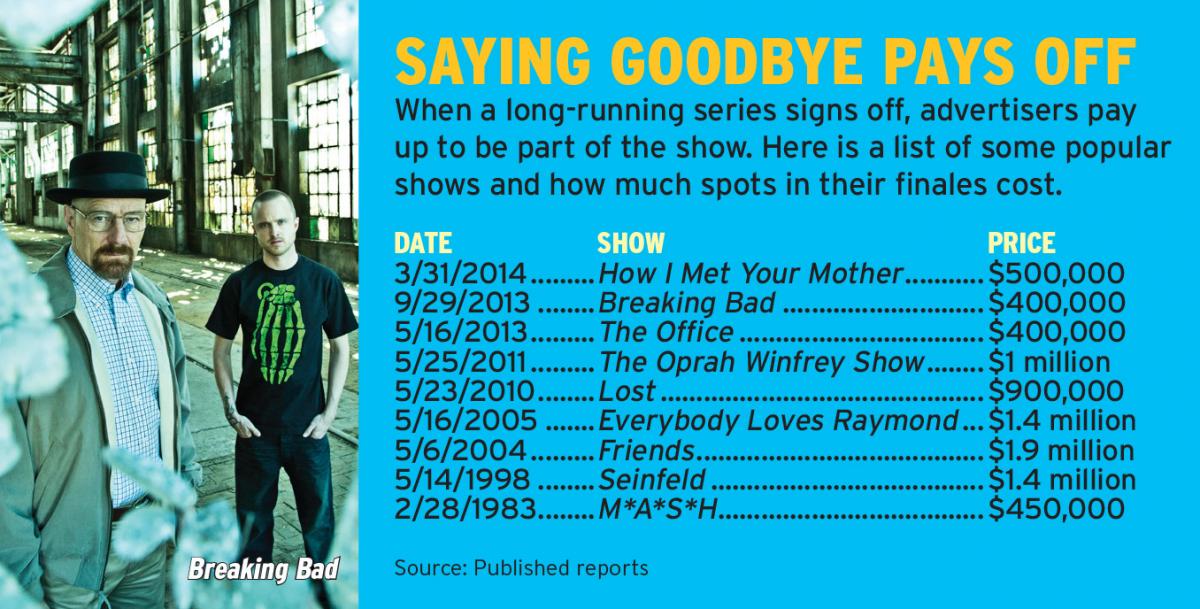Present-Day Agencies Scoop Up ‘Mad Men’ Spots

Quick as you can say Harry Crane, half of the 30-second commercials in the finale of Mad Men have been sold.
In a move designed to impress the modern-day counterparts of Crane—media director at Sterling Cooper & Partners, the fictional advertising agency at the center of the show—AMC Networks decided not to sell spots in the concluding episode during the upfront.
AMC sold commercial inventory for the rest of the seven-episode second half of the last season, set to air starting in April, but told sponsors they would have to wait for the scatter market, to be there when the curtain goes down for good.
In September, AMC executive VP for national sales Scott Collins and his staff let buyers know that spots in the Mad Men finale would be available as part of a package with spots in AMC’s monster hit The Walking Dead. AMC billed the package as Brains & Brawn. Asking price: More than $1 million.
Unlike The Walking Dead, the most watched scripted show on TV, attracting 22.3 million viewers for its season 5 premiere last month, Mad Men has never generated huge ratings, averaging slightly more than 2 million viewers in 2013. But Jon Hamm and company have won an unprecedented four straight Emmy Awards for Outstanding Drama and put AMC on the map as a destination for high-quality original programming since its debut in 2007.

Mad Men also attracts one of the most upscale audiences in television, which makes it attractive to advertisers, particular marketers of luxury goods.
Surprisingly, AMC maintains that there is a significant overlap between advertisers in Mad Men and The Walking Dead.
The smarter way to stay on top of broadcasting and cable industry. Sign up below
Some media buyers questioned the wisdom of packaging spots in The Walking Dead with Mad Men, if for no other reason that last year, commercials in the zombie apocalypse saga sold for $224,0000, according to research company SQAD’s NetCosts service, while spots in the 1960s period piece were a relative bargain earlier this year at $69,000. This year, spots in The Walking Dead were reportedly selling for NFL-level prices of more than $400,000.
AMC declined to comment but the tactic appears to be working. Sources indicate that nearly half of the 20 or so spots in the Mad Men finale are already spoken for. Selling spots this early is an achievement because the advertising market is slow overall with advertisers looking to delay committing to spending until the last moment.
The timing also creates difficulties because the Mad Man finale won’t air till next year’s second quarter, and many clients can’t release second-quarter funds at this point.
Despite its ’60s setting and characters prone to smoking, drinking and fooling around, Mad Men has managed to attract a considerable amount of product placement and integration. Brands including Cadillac, Jaguar, Honda, Gillette, Maidenform, American Airlines, London Fog, Cross pens and Utz potato chips have been featured on the show. Some have been paid for, others have not. Other marketers including Nationwide Insurance, BMW, Clorox and Unilever have created special spots to air during commercial breaks in Mad Men.
Last year, when another acclaimed series, Breaking Bad came to an end, AMC had sold a big chunk of the commercials in the finale in the upfront. The show’s ratings climbed and in the scatter market, the price of spots jumped, with AMC asking $400,000 for the last ones available. AMC is hoping demand for Mad Men follows a similar pattern.
The return of Mad Men will help AMC’s bottom line. During the third quarter, when neither The Walking Dead nor Mad Men aired, AMC Networks’ ad revenue was down 10%, according to analyst David Joyce of ISI Group. With Walking Dead back in the fourth quarter, ad revenue is expected to climb 21%. And in the first quarter of 2015, when the acquisition of 49% of BBC America kicks in, ad revenue could rise 41%, Joyce says.
Jon has been business editor of Broadcasting+Cable since 2010. He focuses on revenue-generating activities, including advertising and distribution, as well as executive intrigue and merger and acquisition activity. Just about any story is fair game, if a dollar sign can make its way into the article. Before B+C, Jon covered the industry for TVWeek, Cable World, Electronic Media, Advertising Age and The New York Post. A native New Yorker, Jon is hiding in plain sight in the suburbs of Chicago.

